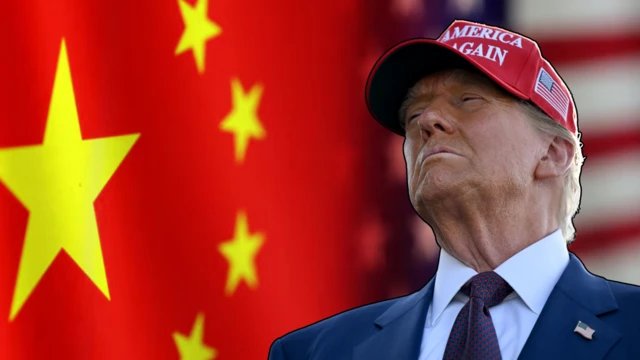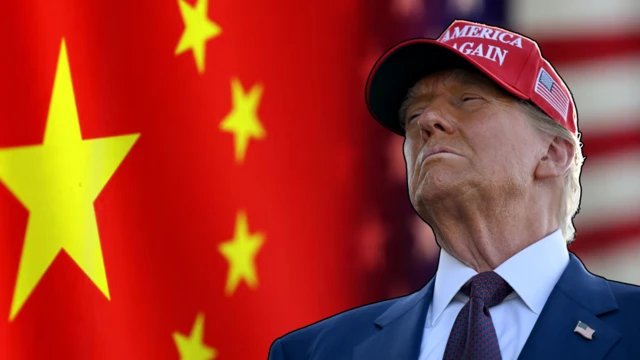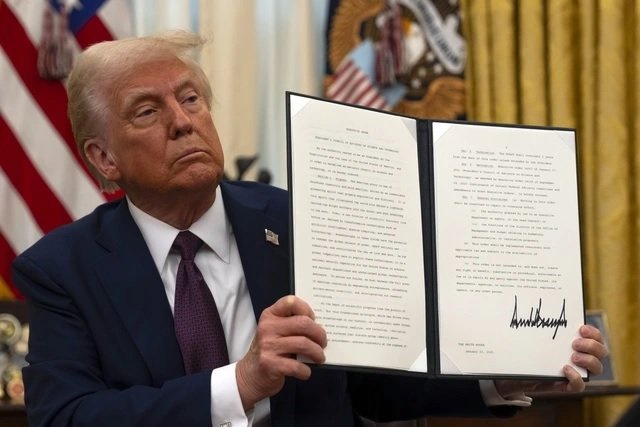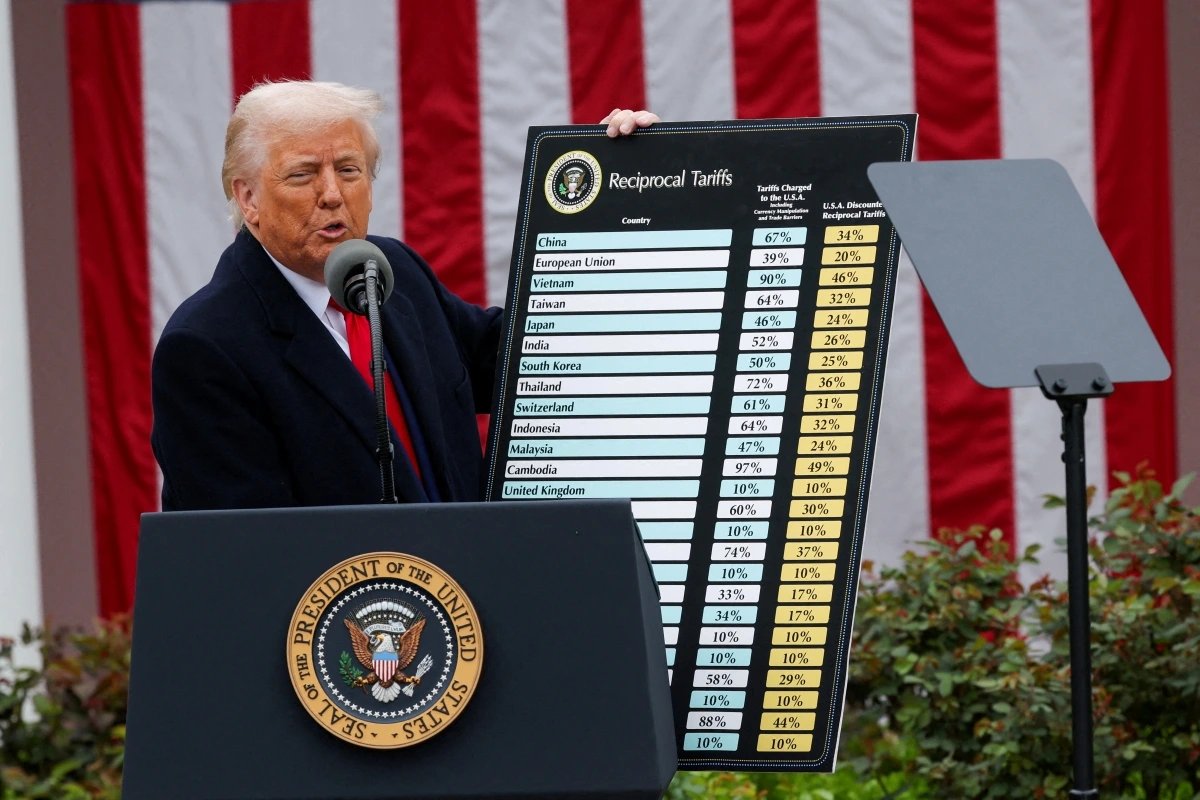
The global economic stage has once again shifted its spotlight to the United States and China, as former President Donald Trump publicly confirmed that negotiations over tariffs between the two economic giants are back on the table. This development has reignited debates around trade policy, international commerce, and the economic strategies of both countries. With tariffs having long been a cornerstone of Trump’s foreign policy during his presidency, his comments mark a potentially significant shift in the dynamics between Washington and Beijing.
### A History of Tariff Tensions

To fully grasp the weight of Trump’s latest comments, it’s crucial to understand the background of the US-China trade war that escalated during his administration. In 2018, the Trump administration began imposing hefty tariffs on Chinese goods, citing unfair trade practices, intellectual property theft, and the massive trade imbalance between the two nations. China responded with retaliatory tariffs, triggering a trade war that impacted global markets, disrupted supply chains, and strained diplomatic relations.
Tariffs on hundreds of billions of dollars’ worth of goods—ranging from electronics and steel to agricultural products—were implemented. These measures were part of Trump’s broader “America First” policy, designed to protect domestic industries and push China to reform its trade practices.
### Trump’s Latest Statement: What We Know
During a recent public appearance, Donald Trump stated that the United States is actively negotiating tariffs with China once again. Though he did not offer specific details about which products are under discussion or the timeline for any potential agreements, his remarks suggest a renewed interest in reevaluating the economic relationship between the two superpowers.
Trump’s assertion is not just about economics—it’s a political statement as well. By reintroducing the topic of tariffs, he is signaling his continued commitment to tough-on-China policies and asserting his influence in shaping the narrative around trade and national economic security.
### Why Now? The Timing Behind the Announcement

The timing of Trump’s announcement raises several strategic and political questions. As the 2024 US presidential election cycle looms closer, Trump is widely expected to be a dominant figure, if not a frontrunner, in the Republican field. By addressing issues like trade and tariffs—areas where he has historically polled well among his base—Trump is reinforcing his economic credentials.
Furthermore, ongoing concerns about supply chain vulnerabilities, inflation, and competition with China in technology and manufacturing may have prompted renewed focus on tariff policies. Many American industries are still recovering from the pandemic’s aftermath, and Trump’s call to action could be viewed as a preemptive strike to reassert American dominance in global trade.
### The Economic Implications of Renewed Tariff Talks
Revisiting tariff negotiations with China could have wide-ranging effects on both domestic and global economies. For the United States, there are potential benefits, such as encouraging companies to bring manufacturing back home and protecting key industries from foreign competition. However, there are also downsides, such as higher prices for consumers and retaliatory measures from China.
For China, the stakes are equally high. The country has faced economic headwinds in recent years, including slowing growth, a real estate crisis, and demographic challenges. The threat of renewed tariffs could further complicate their recovery and may force Chinese policymakers to adopt a more conciliatory tone in trade discussions.
### Political Reactions and Partisan Divide

Trump’s announcement has drawn mixed reactions from both sides of the political spectrum. Republicans have largely rallied behind the idea, viewing tariffs as a means to hold China accountable for its economic policies and alleged abuses. Many GOP lawmakers argue that tariffs remain a necessary tool in leveling the playing field for American workers and businesses.
Democrats, on the other hand, have been more cautious. While some members of the party support a tough stance on China, others warn that tariffs could hurt working-class Americans by increasing the cost of goods and disrupting critical industries. The Biden administration has so far taken a measured approach to China, focusing more on diplomatic engagement and strategic alliances.
### Impact on Global Markets and Trade Partners
The global financial markets have been watching Trump’s comments closely. Any shift in US-China trade relations can ripple across international trade networks, affecting commodity prices, currency values, and investor sentiment. Countries that rely heavily on trade with either the US or China—such as South Korea, Japan, and Germany—are particularly sensitive to changes in tariff policy.
Multinational corporations are also keeping a close eye on developments. Businesses that rely on cross-border supply chains, especially in technology, automotive, and consumer goods sectors, could be forced to adapt their strategies if new tariffs are imposed or existing ones are modified.
### China’s Response: Strategic Patience or Counterattack?
So far, Chinese officials have been relatively quiet in response to Trump’s latest remarks. However, history suggests that Beijing is unlikely to remain passive. During the height of the trade war, China responded swiftly and firmly with its own tariffs, import restrictions, and strategic realignments.
If Trump’s statements materialize into actual policy, China may again employ a mix of economic and diplomatic tactics to push back. This could include targeting US companies operating in China, limiting exports of rare earth minerals, or seeking alternative trade partnerships with other major economies like the EU or Southeast Asian nations.
### Could Negotiations Lead to a New Deal?

Some analysts are cautiously optimistic that fresh negotiations could lead to a more balanced trade agreement between the US and China. A revised deal might focus on reducing tariffs in exchange for structural reforms within China, such as improved intellectual property protections, market access for foreign firms, and more transparent regulatory practices.
Yet, skepticism remains. The deep-seated differences between the two countries go beyond trade. Issues such as human rights, military tensions in the South China Sea, and competition over technological supremacy all contribute to a complex and often adversarial relationship.
### Tariffs as a Political Weapon
Tariffs are not just an economic tool—they’re also a potent political weapon. By highlighting the issue, Trump is once again positioning himself as a defender of American workers and industries. He’s tapping into a growing sentiment among Americans who feel that globalization has left them behind and who view China as a strategic rival rather than a partner.
In many ways, the tariff debate has become symbolic of broader national concerns: economic security, job creation, and the future of America’s role in the world. Trump’s use of tariffs as leverage underscores his strategy of economic nationalism, which continues to resonate with a significant portion of the electorate.
### Looking Ahead: What to Expect
As the situation develops, there are several possible scenarios to watch:
1. **Formal negotiations resume**, leading to new trade agreements or adjustments to existing tariffs.
2. **Escalation of tensions**, with both sides implementing new tariffs or sanctions.
3. **Political maneuvering**, with tariffs used as campaign fodder ahead of the next US election.
4. **Global economic repercussions**, especially if investor confidence is shaken by the uncertainty.
The direction of these talks will depend not only on Trump’s rhetoric but also on the responses from the current US administration and Chinese leadership. With so much at stake, the world will be watching closely.
### Conclusion: A Familiar Battle With New Stakes
Donald Trump’s revelation that the US is once again negotiating tariffs with China opens a new chapter in an already volatile economic saga. While some view it as a step toward reclaiming American industrial strength, others see it as a risky move that could reignite trade hostilities.
Whether these negotiations lead to resolution or renewed conflict, one thing is clear: the US-China relationship remains one of the most pivotal and complex alliances in the world. Trump’s influence over that relationship—through both policy and political narrative—continues to shape the future of global trade.


